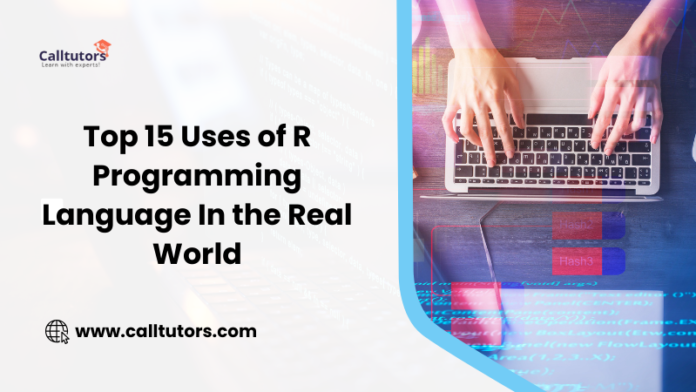R has emerged as a leading open-source programming language and software environment for statistical, data visualization, and reporting. Created in the 1990s by Ross Ihaka and Robert Gentleman at the University of Auckland in New Zealand, R has gained widespread popularity as a platform for data analysis and statistical computing across industries and research fields. With a comprehensive library of over 10,000 community-contributed packages, R provides a diverse toolkit covering a multitude of statistical and graphical techniques for data mining, predictive modeling, data visualization, and more.
In this blog post, we take a look at 15 of the most common real-world applications and use cases of the R programming language across various domains and industries. By leveraging R’s flexibility as well as the depth of analytics functionality provided through its packages, these examples demonstrate R’s vast capabilities and utility for data-driven work.
Note: If you are struggling with your R programming assignment, then you can get the best R programming assignment help from our highly experienced experts.
1. Statistical Analysis and Graphics
R provides built-in tools and packages for statistical analysis like linear and nonlinear modeling, time-series analysis, classification, clustering, and powerful graphics capabilities.
2. Data Wrangling
R offers excellent data manipulation capabilities for munging, cleansing, transforming, and reshaping data frames through packages like dplyr, tidy, and stringer.
3. Machine Learning
R enables machine learning tasks like classification, regression, clustering, dimension reduction, model validation, and hyperparameter tuning through packages.
4. Business Analytics
For business intelligence and analytics, R generates insightful visualizations, forecasts, and predictive models for data-driven decision-making and strategy.
5. Bioinformatics
In bioinformatics, R is widely used for the analysis of genomics data, sequence analysis, pathway analysis, gene expression analysis, and visualization.
6. Finance
R is used extensively in finance for trading, risk analysis, modeling, and financial computation using specialized packages.
7. Image Processing
R enables image processing capabilities like classification, clustering, manipulation, augmentation, compression, and edge detection through packages.
8. Natural Language Processing
NLP packages make R suitable for text-mining tasks like classification, tokenization, stemming, sentiment analysis, topic modeling, and more.
9. Forecasting
R provides sophisticated forecasting capabilities for time series modeling, smoothing, decomposition, simulation, and prediction using packages.
10. Network Analysis
Specialized R packages offer tools for network analysis like centrality measures, community detection, sampling, visualization, and dynamic modeling.
11. Spatial Data Analysis
Packages in R provide capabilities for working with spatial data like shapefiles, rasters, online maps, geostatistical analysis, modeling, and mapping.
12. Web Analytics
R packages can scrape, parse, and mine data from web APIs, social media platforms, and websites and generate web-based dashboards.
13. Database Connectivity
R can connect to databases like MySQL, PostgreSQL, and MongoDB to perform statistical analysis, modeling, visualization, and reporting of database data.
14. Reproducible Research
R Markdown allows embedding R code with text to generate reproducible reports, presentations, dashboards, and applications.
15. Big Data Analytics
Seamless connections of R with big data platforms like Spark, Hadoop, and NoSQL databases enable large-scale distributed storage, processing, and analytics of massive datasets.
Conclusion
From statistical computing to machine learning, R offers an open, versatile environment for data analysis and visualization across a diverse range of applications. Active development and maintenance of R paired with thousands of packages contributed by a vibrant community of developers and researchers make R future-ready for upcoming real-world challenges. With enterprises adopting a data-centric approach and the growth of analytics, R is poised to become an indispensable tool for data scientists and statisticians working on impactful projects. While R has its learning curve, its power, flexibility, and breadth of capabilities make it a solid investment for anyone pursuing a career in data science, analytics, or statistical programming.

